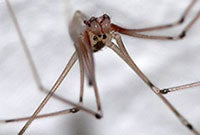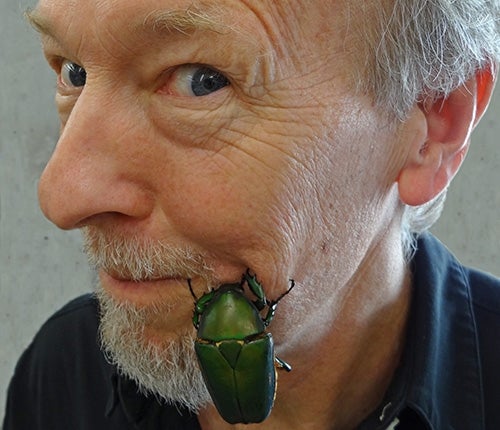Career Path for Jon Harrison
Fast Facts:
- Number of years in school: 21
- Favorite class / subject: Environmental Sciences
- Hardest class / subject: Physics
- First Job: Mowing lawns and shoveling snow
- Dream job as a kid: Forester
- One word you would use to describe your current job: Stimulating
Harrison enjoyed watching animals like insects and spiders, and wondering how they lived.
Outside, days or nights can be hot, cold, dry, or wet. How do animals survive without a house to hide in, complete with air conditioner and heater? These types of questions are what sparked his interest in biology.
When he was younger, Harrison imagined becoming a forester. He also explored the idea of becoming a doctor, but then decided against it, and left school to pursue a job outside of a university setting. Over the years, he held many different jobs, including teaching wilderness education programs and installing solar power panels. But throughout this time, he always kept in mind how much he loved getting a peek at the seemingly secret lives of animals.
Just like a spider can choose many different paths across a forest floor, there is no one right way to become a scientist. Though Harrison’s path wandered between many different fields, he eventually decided to pursue a career that would let him answer questions about how animals survive in their environments. He worked on getting an advanced degree and started research on reptiles, but soon discovered his love for insects.
Arizona is home to many kinds of grasshoppers, such as this Rainbow (or Painted) Grasshopper
Since pursuing his research on the ecology and physiology of insects, Harrison has never looked back, as working on a wide range of questions about biology and insects keeps him busy and happy. As a professor at ASU, he gets to do what he loves: ask questions, solve puzzles, and mentor students as they work their way into this important field of science—no matter what path they take to get there.
View Citation

Jon Harrison with one of his giant research beetles.
Be Part of
Ask A Biologist
By volunteering, or simply sending us feedback on the site. Scientists, teachers, writers, illustrators, and translators are all important to the program. If you are interested in helping with the website we have a Volunteers page to get the process started.
Discover exciting careers in science and beyond by exploring fun virtual Worktours(link is external) of real companies.







